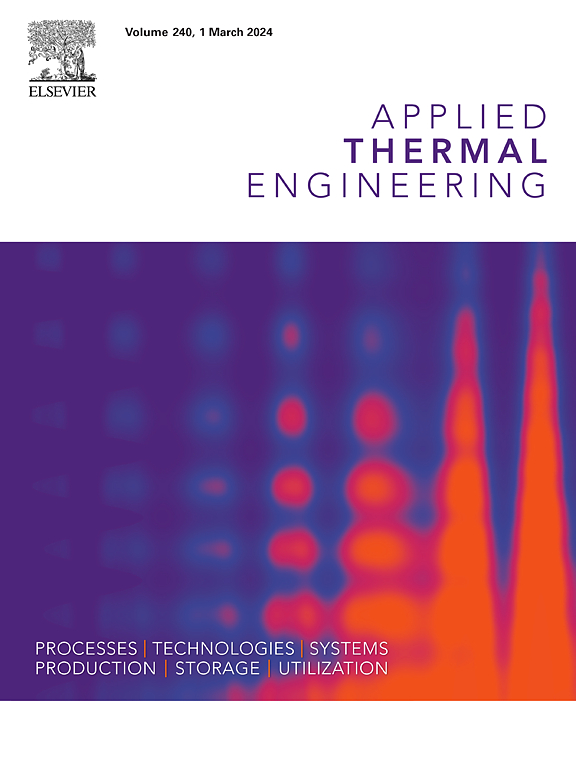Optimal phase change material integration strategies for maximizing electronic device reliability
IF 6.1
2区 工程技术
Q2 ENERGY & FUELS
引用次数: 0
Abstract
The reliability of electronic devices under transient heat loads is a critical challenge in modern electronics thermal management. Phase change materials (PCMs) offer effective transient thermal management for cyclic heat loads by buffering temperature fluctuations using their latent heat of phase change. However, the narrow operating temperature range offered by PCMs and complexities associated with melting and solidification make designing PCM-integrated thermal management systems a challenge. This study investigates the optimization of PCM-integrated heat sinks to maximize electronic device reliability. Using Gaussian process optimization coupled with an experimentally validated reduced-order model, key geometric parameters of a heat sink integrated with composite PCMs incorporating high thermal conductivity inclusions are optimized. The study evaluates various PCM heat sink geometries and their impact on device lifespan under varying heat dissipation pulse widths, duty cycles, and heat fluxes. Additionally, the influence of different PCM melting temperatures and external cooling methods, including air-cooled and liquid-cooled conditions are analyzed. The results demonstrate that while PCMs effectively buffer temperature swings, their effectiveness is highly sensitive to the device operating conditions such as the heat loss profile, and cooling strategy governed by the external cooling condition. External cooling significantly broadens the power range that PCM-assisted cooling can manage, accommodating heat loads from 0.5 W/cm2 to 520 W/cm2 under the investigated cooling conditions. With air-cooling, the optimized PCM-integrated heat sink demonstrates up to 83X higher expected lifetime compared to a pure copper heat sink having an optimized geometry, highlighting the substantial benefits of PCM-assisted cooling. We propose a design flow chart for PCM heat sink integration to guide the development of optimized thermal management systems. This work makes a significant contribution by directly linking the improved thermal performance of optimized PCM heat sink designs to the prediction of device lifetime across various operating conditions. We present an efficient methodology for identifying the conditions under which PCM integration provides the greatest benefit. These findings offer valuable insights for designing PCM-based thermal management systems, paving the way for improved longevity and performance in high-power electronic systems.

求助全文
约1分钟内获得全文
求助全文
来源期刊

Applied Thermal Engineering
工程技术-工程:机械
CiteScore
11.30
自引率
15.60%
发文量
1474
审稿时长
57 days
期刊介绍:
Applied Thermal Engineering disseminates novel research related to the design, development and demonstration of components, devices, equipment, technologies and systems involving thermal processes for the production, storage, utilization and conservation of energy, with a focus on engineering application.
The journal publishes high-quality and high-impact Original Research Articles, Review Articles, Short Communications and Letters to the Editor on cutting-edge innovations in research, and recent advances or issues of interest to the thermal engineering community.
 求助内容:
求助内容: 应助结果提醒方式:
应助结果提醒方式:


